

European
Nuclear Society
e-news
Issue 20 April 2008
Throughout the recent protracted winter the nuclear community has experienced a hive of activity. Now that spring has finally decided to show up that preparatory work is beginning to bear fruit. This time of year is the traditional conference season and the nuclear community has been spoilt for choice with a plethora of conferences on offer. Of course, many of these conferences - like RRFM and PIME and FORATOM’s flagship biannual conference ENA - are well-established events. The issues under discussion, like security of supply, climate change, reactor design, safety, waste and fuel management are recurring ones. But I’m sure that I am not alone in detecting that conferences are beginning to reflect the confident new spring in the nuclear family’s step. An experienced journalist who regularly writes on energy matters recently told me that he had attended several of these conferences in the past and had come to the conclusion that they are invariably the same – a “nuclear jamboree” where the same people discuss the same old issues with the same decision-makers and fail to address the genuine concerns of ordinary people. His assessment is, to say the least, a bit harsh.
Naturally, conferences provide a platform for the industry to put its case to decision-makers and to showcase its cutting edge research. That’s one of the main reasons why they are organised. They might not always generate the kind of news that sells newspapers, but the issues that are discussed are nonetheless of fundamental interest to readers. And they also give the industry a chance to network with an ever- wider range of stakeholders.
Perhaps our journalist friend hasn’t attended a nuclear-related conference recently. Had he done so he couldn’t have failed to notice that the focus and approach of these conferences have changed subtly. Press coverage following record media participation at ENA 2008 (the journalist in question chose not to attend) threw up banner headlines like “Piebalgs goes for nuclear,” “Nuclear energy vital in climate fight, says EU Commissioner” or “EU energy chief seeks boost in nuclear investments.” In his widely-quoted opening speech Commissioner Pieblags emphasised that : “Nuclear energy has proven to be a stable, reliable energy source, relatively shielded from price fluctuations. It fulfils an important requirement of all of three pillars of EU energy policy, which are competitiveness, security of supply and sustainability.” Radical statements like this by senior politicians seem light years away from the earlier tendency to dismiss nuclear energy as a taboo subject.
The nuclear revival has raised the stakes for the industry and politicians alike. It has given renewed impetus and relevance to existing issues and generated new ones. And conference agendas are increasingly reflecting this reality. Of course, issues like security of supply, combating climate change and managing radioactive waste still feature high on conference agendas. That’s because they remain fundamentally relevant to Europe’s current energy context. However, conferences are now beginning to cover a wider range of issues like the financing of nuclear new build, the forging of Europe’s low-carbon economy, the reactors of tomorrow and training and educating the next generation of nuclear scientists and engineers. This has encouraged more stakeholders to the debating table, including economists, investment banks, think tanks, environmentalists and consumer groups. Each one brings a new perspective, lays down a new challenge or provides a new take on the nuclear revival. This makes for a more inclusive and dynamic debate. So, is this really just another case of the “same people discussing the same old issues in the same old way?” Well, when it comes to content and political announcements conferences like ENA 2008 can hardly be accused of being mere partisan exercises in introspection. Perhaps it’s high time our journalist friend saw the bigger picture and participated in another nuclear conference.
At the same, the level of expectancy among conference-goers is increasing. They want to participate in lively debates and see common positions and recommendations emerge. They want to hear the industry articulating the right messages to the right audience in a loud and confident voice. Of course, there is still plenty of room for improvement and some conference are more focused than others, but, judging from feedback received from recent conference-goers, things are gradually heading in the right direction. Do you agree?
The news section of ENS NEWS N° 20 starts with the traditional Word from the President. On this occasion David Bonser congratulates the Swiss Nuclear Society on its fiftieth anniversary and reflects upon the special place that they have in the history of nuclear science and development in Europe.
Sociologists have often analysed why so many people are afraid of nuclear energy. Andrew Teller, in his thought-provoking column, looks at the question from a different angle, preferring to answer the recent claim made by an anti-nuclear commentator that it’s impossible not to be afraid of it.
Issue N° 20’s events section is crammed with information on the busy international conference season that I spoke about earlier. It contains two reports on PIME 2008, one a detailed blow-by blow account for those of you who weren’t able to attend and the other an appraisal by our friends from Nuclearelectrica, in Romania.
RRFM needs no introduction. It is a flagship event on the ENS conference calendar. ENS NEWS features a review of the 2008 conference in Hamburg from a Young Generation Nuclear perspective.
Last but not least, the biannual European Nuclear Assembly (ENA 2008) organised by FORATOM, which was attended by several ENS members, is put under the ENS NEWS microscope. The important developments that are shaping the course of EU energy policy are of fundamental interest to the present and future of the nuclear science community and the ENA 2008 programme accurately reflected the growing political impetus behind the nuclear revival.
The Member Societies and Corporate Members section covers a wide range of issues and discussion points, including an IAEA report on the recent OSART mission; a report from the Advanced Reactor Group of CEIDEN (the National Technological Platform for Nuclear Fission Research), in Spain; an analysis of the neutron flux, fuel and moderator temperature transients in research reactors and a “Nuclear Leadership Awareness Workshop,” in Rome.
Our colleagues from the Young Generation network (YGN) then turn readers’ attention to how the nuclear industry is portrayed in the media – more especially in the television series The Simpsons. For those of us who might not be switched on to The Simpsons, the main character, Homer Simpson, works at a fictional nuclear power station somewhere in the US. This cult programme presents nuclear energy in a satirical way and highlights common stereotypes. Judge for yourself…..
The European Institutions section features an EU Affairs training course organised in January by FORATOM. Its aim was to introduce a variety of stakeholders to the institutional set-up in Brussels and to the objectives and work of the nuclear lobbying fraternity.
Finally, some NucNet reports provide us with nuclear news from around the globe.
Enjoy ENS N° 20, and the spring….if it has reached you yet!
|
|
|
http://www.euronuclear.org/e-news/e-news-20/presidents-contribution.htm


Anniversaries are a time for celebrating, remembering past achievements and for reflecting on the present and the future. Well, I was delighted to have been invited to take part in celebrations to mark the recent 50th anniversary of a stalwart member of ENS – SGK, the Swiss Nuclear Society. To have represented the Swiss nuclear science community with distinction for half a century is a considerable achievement in itself. Since Switzerland has always played a lead role in the development of nuclear energy in Europe, and SGK has been at the forefront of the nuclear science movement in Switzerland since the early pioneering days, it is true to say that the Swiss Nuclear Society has been an indelible part of that history. It has witnessed the good days and the bad days. SGK’s fiftieth birthday got me thinking about the unique place that Switzerland has occupied in the history of nuclear development in Europe and of the Society’s place in that history. There are interesting parallels that can be drawn between what Switzerland and the UK have experienced and between their respective positions today. Allow me to share a few memories and observations with you.
I was especially delighted to be part of the celebrations because throughout my career I have had the pleasure of working with the Swiss nuclear community at various levels and have experienced first hand their dedication and technical expertise. During my time at BNFL I have been privileged to work with NOK, Switzerland’s N° 1 producer of nuclear-generated electricity. At that time I was also Chairman of NIREX in the UK and this gave me the opportunity to work alongside colleagues at NAGRA, the Swiss National Co-operative for the Disposal of Radioactive Waste. This has enabled me to get a first-hand personal insight into the Swiss approach to nuclear power and I have never failed to be impressed.
As we reflect upon 50 years of Swiss nuclear history, it strikes me as particularly appropriate that these anniversary celebrations should take place at the Paul Scherrer Institute. In the 1950s, Paul Scherrer and his associate Walter Boveri led the nuclear movement in Switzerland. Walter Boveri, together with Charles Brown, later founded the Brown Boveri Corporation (ABB), which played a key role in the early development of nuclear power in Europe and became an international force in reactor design and the building of nuclear power plants. I remember well when, under BNFL’s ownership, Westinghouse acquired the nuclear interests of ABB.
In 1955, Switzerland hosted the World Conference on the Peaceful Uses of Atomic Energy, and Switzerland has been promoting this aim ever since.
In common with virtually all nations, Switzerland has had its difficulties. For 20 years the “Kaiseraugst” controversy became a cause célèbre for anti-nuclear protestors. And, of course, radioactive waste management has been problematic at times. However, I am sure that every nuclear nation would concede that handling radioactive waste can be a problem. NAGRA has accumulated a great deal of technical experience and expertise over the years and has come up with a range of effective technical solutions to the question of handling nuclear waste. The secret is getting increased public acceptance for these solutions translating this into political acceptance of and support for them.
This underlines the importance of effective communications. It’s all about getting the message across. Some countries have learnt the importance of good public communications the hard way, for others it is built into the fabric of the political landscape – which helps. Over the years, the Swiss system of open democratic decision-making has proved to be a strength when overcoming these communications problems. The Swiss Nuclear Society has played a key role in making sure that the right messages reach the right audiences. Although decision can be a long process in the Swiss system, once reached decisions are invariably accepted and implemented. Consequently, the Swiss industry has always been well placed to produce long-term, outstanding results….and it has! Throughout the past 20 years the Swiss fleet of power reactors has run with a load factor of 80% and around 90% over the past 10 years. This is an outstanding achievement by any standards and worthy of our congratulations.
For many years Switzerland has reprocessed its fuel and for 30 years you have been burning MOX fuel in Swiss reactors. The fact that Switzerland was one of the first nations to close the thermal cycle is another example of responsible and thoughtful leadership by the Swiss nuclear industry.
So, after 50 years of successful nuclear power generation and 50 years of SGK representing unstintingly the Swiss nuclear science community, it is time to look to the future – a future that I’m sure SGK will be an active part of. Switzerland and the UK have both recently changed their nuclear policy and embarked upon a programme of nuclear new build. Both countries are seeking to replace and increase existing capacity.
The peaceful use of nuclear energy has a long and distinguished history in Switzerland. There is much to look back on with pride. And strong foundations have been laid for the next phase to be built upon. The future looks bright.
It has been a pleasure for ENS to count SGK among its members and long may the fruitful cooperation between the two continue.
Congratulations to the Swiss Nuclear Society for the past 50 years…and here’s to the next 50!
David Bonser
President of ENS
http://www.euronuclear.org/e-news/e-news-20/listening.htm


A couple of years ago, the French Commissariat à l’Energie Atomique (Atomic Energy Commission, CEA for short) entrusted sociologists with the task of investigating the reasons why so many people were afraid of nuclear energy. In an article recently found on the Internet1, an observer named Jean-Pierre Dupuy was reported to have commented that it seemed to him far more urgent to commission an anthropological investigation aiming at understanding why the “nucleocrats” were not afraid of it.
That Jean-Pierre Dupuy is no friend of the nuclear industry is clear to all those who have heard of his work. In a book such as Retour de Tchernobyl, le journal d’un homme en colère2 (Back from Chernobyl, the Diary of an Outraged Man), he equates the civil use of nuclear energy with sheer madness, almost on a par with its military developments. At the same time, he is no run-of-the-mill anti-nuclear; Jean-Pierre Dupuy followed the brightest academic curriculum that can be imagined in France. He graduated from the famous Ecole Polytechnique and then from the no less famous Ecole des Mines, which means that he belongs to an elite within an elite. He teaches social and political philosophy both at the Ecole Polytechnique and at Stanford University. This is one reason why I feel that his recommendation cannot be brushed aside without further thought. Another, more important, reason is that his proposal makes a lot of sense from a methodological point of view. Our understanding of a matter as baffling as this one will only benefit from being tackled from different angles. With a bit of luck, the light shed by one approach could make up for the areas left in the dark by the other. Since the mindset of the supporters of nuclear energy is not unknown to me, I cannot resist the temptation of trying to offer my own answer to this question, pending a fully-fledged enquiry conducted by professionals. Why on earth aren’t we afraid of nuclear energy? Here is a non exhaustive list of reasons that spring to my mind.
Because of the overall good record in terms of safety of the nuclear industry compared to the other energy generation activities. This is not the place to start an argument about what the actual figures are or should be; suffice it to say here that there are numerous surveys indicating that the number of casualties per terawatt-hour due to nuclear power plants is lower than for other energy sources, notably hydro-power. Critics of nuclear energy will of course object that the statistics we rely on are biased. We in turn can assert that their figures are inflated for reasons diametrically opposite to ours.
Because we consider that focussing on the magnitude of the potential damages of an activity without taking account of the probability attached is not rational. It must be pointed out in this respect that J.-P. Dupuy’s book titled Pour un catastrophisme éclairé3 (For an enlightened “catastrophism”) devotes a sizeable amount of space trying to get rid of the probability factor.
Because all those who are trying to scare us away from the civil use of nuclear energy make mistakes in their appraisal of the facts. How could we be swayed by the views of people who obviously misunderstand essential features of the matter under consideration? It must be noted here that Prof. Dupuy is not immune to this shortcoming since he himself seems to believe that the Chernobyl accident could have evolved in a true atom-bomb-type explosion. We all know that the low enrichment of the fuel and its physical layout precluded an atomic explosion. Unit 2 of Chernobyl actually underwent a chemical explosion the outcome of which was about the worst that could be expected from this type of accident.
Because we believe that the Chernobyl accident resulted from a gross violation of procedures that could only happen in a very specific environment that was at the time characterised by insufficient professional training and perverse productivity incentives.
Because we believe that getting obsessed with the dangers of nuclear energy can lead us to overlook other, more likely, threats. It all boils down to optimising the allocation of limited resources to monitor the numerous problems of the modern world.
Because we are all aware of the enormous efforts spent keeping the safety of nuclear activities at the highest level. It can even be claimed that the nuclear industry as a whole has invented a quality assurance system aiming to fighting the main threat to high performance: complacency. The past record of this industry indicates that complex systems such as nuclear power generation can be successfully handled.
Because we believe that deep geological disposal provides a suitable solution to the question of the radioactive .waste.
Because the more sophisticated of our critics never deem it necessary to express their disapproval of unfair attacks of their not-so-sophisticated brothers. They so lose a golden opportunity of putting themselves in the position of a fair arbiter who can be listened to by all parties.
The last item of this list leads me to the conclusion of this column in the shape of two observations. First J.-P. Dupuy’s proposal might be less disingenuous than it seems. Resorting to an external authority – in the present case, sociologists or anthropologists – to elucidate a matter of opinion might imply that there is something wrong with the population to be investigated. This comment can of course apply to the CEA’s initiative. In the same vein, Prof. Dupuy’s recommendation might be a subtle way of implying that those holding misguided opinions are not those who one might think. Second, the external authority resorted to must be unbiased to deserve its status of independence. This cannot be guaranteed in the present context: the investigators will be as much affected by the matter under consideration as the people investigated. In order to minimise the impact of unavoidable biases, I suggest the following. Let samples of both groups (those afraid and those who are not) be investigated each by sociologists of opposite opinions and let the latter cross-examine the results of their respective enquiries. Since one’s critical power is always at its best when exercised on opinions one disagrees with, this is how we stand the best chance of coming to a genuinely useful implementation of this interesting idea.
1 www.marianne2.fr/Bandajevsky-le-medecin-dissident_a66921.htm
2 Le Seuil, Paris, 2006
3 Le Seuil, Paris, 2002
http://www.euronuclear.org/e-news/e-news-20/nestet2008.htm


This important European Nuclear Society (ENS) conference is dedicated to networking in nuclear education and training across the fields of engineering, science and technology.
nestet2008.org/registration.php
Registrations for the Technical Tour to Paks Nuclear Power Plant can only be up until Friday 25 April!
The Technical Tour to the Budapest Research Reactor and the Training Reactor at the Budapest University of Technology and Economics is already fully booked.
 |
http://www.euronuclear.org/e-news/e-news-20/topsafe2008.htm


The conference will provide a forum for addressing the current status and future perspectives with regards to safety at nuclear installations worldwide. It is organized in cooperation with the Croatian Nuclear Society (HND).
The three day programme covers the following thematical tracks:
Safety of Safety Issues of Operating Power Plants
Design Safety Issues, Safety Assessment Analysis, Operational Safety, Licencing
Safety Issues of Future Power Plants
Near term deployment reactors (EPR, SWR1000, AP1000, ESBWR, SBWR, ACR-1000)
and Generation IV reactors
Safety Issues of Research Reactors (pool type and others)
Fuel Cycle Facilities Safety
Uranium mining and conversion, enrichment and fuel production, reprocessing
and transmutation, waste disposal
For more information:
http://www.euronuclear.org/e-news/e-news-20/pime2008.htm


Over 190 delegates from 30 countries, including Canada, the US, Japan, Korea, South Africa and Australia, congregated in the beautiful city of Prague to attended PIME 2008. This conference, which was organised by the European Nuclear Society (ENS) with the collaboration of FORATOM and the Czech power company, CEZ, is unique because it the only one on the international conference calendar that is specifically designed for communicators working in the nuclear industry and research community. With the nuclear revival gathering steam across Europe and beyond, this year’s PIME was especially significant. With the environment for communicating nuclear much more favourable than it has been in recent years, and with more and more governments, environmentalists and citizens alike prepared to listen to what the nuclear community has to say, the onus on effective, results-oriented communications is equally greater. This brings with it added responsibilities for communicators, as well as added opportunities. Nuclear communicators are expected to deliver results and exploit the current favourable climate. The stakes are higher, but so too are the rewards. This fact seems to have energised nuclear communicators, a fact that was reflected in the increased sense of dynamism, enthusiasm and collective purpose that was noticeable during the debates and workshops at PIME 2008.
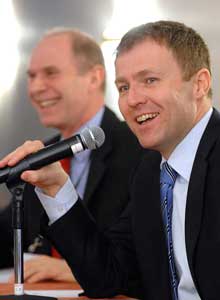 |
The conference programme revolved around three plenary sessions and six parallel workshops. After an opening address from the Conference Chairman, David Bonser, the guest speaker was Martin Roman, CEO of CEZ. He spoke about the vital importance to CEZ of effective communications, both for exploiting the large degree of public support for nuclear energy in the Czech Republic and for countering the hostile anti-nuclear stance of its Austrian neighbours - especially their unremitting campaign against the Temellin NPP. CEZ has a multi-level communications strategy, with a variety of approaches aimed, among other things, at stressing the assets and added value of nuclear energy and at fostering good community relations as a key to growth in the sector. |
The first plenary session was entitled Communicating Science and brought together two speakers with a lot of experience of with communicating scientific complexities in a simple and easy-to-understand way. The first was Dr. Brian Cox. Dr. Cox lectures in particle physics at the University of Manchester and is in charge of a major research project at the CERN laboratory in Geneva. He also regularly features in scientific programmes on British TV and radio. The second speaker was Giovanni Corrada, who lectures at the University of Sienna and acts as a consultant on science communications. They asked each other questions about how to best communicate science in a way that interacted with the conference floor and explored options based on their experiences. The public’s views on science tend to be polarised and influenced by preconceptions. Giving them more facts does not necessarily make them more or less in favour. One of the main messages of this session was that the public should be given the facts in a simple and clear way that they can relate to so that they can make a better judgement. They shouldn’t be blinded by science or turned off by complex concepts explained in complex terms. Nuclear communicators must experiment in new innovative ways of presenting the facts.
The second plenary session focused on the perception and communication of nuclear risk and centred on a fascinating presentation by an American communications consultant, David Ropeik. He showed how the human brain perceives and responds to danger with a mixture of reason, emotion, intellect and instinct. He summarised how our fears often do not match the facts and how it is important for risk managers to take account of the risk perception process in when making decisions.
True to PIME tradition, there then followed a session on the host country, in which CEZ outlined the current political and economic situation in the Czech Republic and on its intentions to carry out a new build feasibility study in spite of the current moratorium on new build introduced by the Czech government.
Delegates then broke out into one of the three parallel
workshops on the programme for Day 1. These workshops, in which the emphasis
was very much on interactive group discussions and delivering an end product,
were devoted to the themes of Internal Communications, New
Tools and Where Others Have Succeeded and We Have Failed.
Each workshop featured a series of short statements from a range of experts
representing industry, international organisations and communications consultancies
(for a complete list of speakers and moderators click on the following
link to the PIME 2008 Programme: www.pime2008.org/programme.htm.
A maximum amount of time was set aside for discussion with conclusions and
recommendations as the end product (these were later presented in plenary on
Day 2).
The focus of discussion for the workshop on Internal Communications was how empowering employees with information thanks to effective internal communications campaigns instils in them a stronger sense of belonging and identifying with their organisation. This then enables them to talk with pride and conviction about their organisation to outside audiences. In short, good internal communications can help an organisation achieve both internal and external communications objectives.
The Young Generation Network moderated the workshop on New Tools. During this workshop the emphasis was on exploiting the communications reach and benefits of the plethora of communications channels and tools available to today’s communicators. The main focus was using new communications tools like blogging, podcasting, Facebook, Second Life and You Tube to engage stakeholders in the nuclear debate - and especially the younger ones. With 54% of all the opinions on nuclear expressed in blogs negative towards nuclear, 25% neutral and 21% positive, there is clearly still a long way to go to change things around. But new tools can help change people’s perceptions by involving them more actively in the debate.
The third workshop, entitled Where Others Have Succeeded and We have Failed, vas dedicated to looking at the communications experiences of other industries. The aim was to find out where nuclear communicators can pick up some tips from the successes of communicators from other industries and apply them to their own situation. The European Wind Energy Association (EWEA) and Czech Railways gave presentations outlining how their recent communications campaigns have helped to debunk common myths, improve corporate image, increase public acceptability or reverse the negative impacts of an unforeseen crisis (the Czech Railways case study was handling the breakdown of the pendolino high speed train and managing the negative relational impact).
Day 2On Day 2, the debating spotlight fell on the global revival of nuclear energy. Three keynote speakers outlined the latest global developments in the nuclear field. Janice Dunn Lee, Deputy Director General of OECD/NEA, stressed the importance of transparency when communicating about nuclear energy and outlined the consolidated research effort going on worldwide - most notably that of the Generation IV International Framework, GIF. She also spoke about multi-lateral approaches and the vital need for having common international regulatory practices for the safe operation of reactors. |
 |
Ute Blohm-Hieber, Head of the Nuclear Energy Unit at DG TREN (European Commission) gave a detailed overview of recent political developments at EU level that have underpinned the nuclear revival in the Community. She spoke above all about the work of the High Level Group on Waste and Safety (HLG), the Sustainable Nuclear Energy Technology Platform (SNETP) and the European Nuclear Energy Forum (ENEF). Among the many policy priorities she outlined were the importance of nuclear energy in the energy mix to ensure secure supplies of energy, integrating energy and environmental policies, sustainability and the low-carbon economy and the European Commission’s priority new framework for nuclear safety, waste and decommissioning.
Finally, Ian Facer of the IAEA gave a lively talk about the recent history of nuclear, its current status globally and the role of the IAEA in providing, among other things, member states with guidance and training and in identifying common objectives and standards. He spoke about the truly global reach of nuclear, emphasising that of the world’s 6.6 billion inhabitants today, 4.05 billion live in countries that have nuclear power and 1.40 billion live in countries where 80% of the population are interested in having nuclear. This means that only 0.026 of the world’s total population live in countries that are quite simply non-nuclear or anti-nuclear.
The three workshops on Day 2 were devoted to discussing the following key issues: Education and Training, Risk Communication and Public Consultation and Stakeholder Involvement.
The workshop on Education and Training included a wide-ranging debate about the shortage of young talented people in many European countries choosing a career in nuclear research or engineering and focused on the need for trans-European dialogue, improved communications to “sell” nuclear and co-operation to reverse current trends. Among the cases studied were: education and training programmes offered by universities in the Czech Republic with the support of industry (CEZ) and the research community (REZ); education, training and international co-operative research projects run by Belgium’s national research centre (SCK-CEN); activities organised by the CEA, in France, to sensitise ad younger students to the benefits of a career in industry or research - especially targeting school children; education and training courses offered by the Josef Stefan Institute, the University of Ljubljana and the Krsko NPP, in Slovenia and last, but not least, the educational and training opportunities offered by the specialised National Skills Academy for Nuclear, in the UK.
The workshop on Risk Communications included contributions from a specialised risk communications consultant (David Ropeik, who spoke on Day 1), the World Nuclear Transport Institute (WNTI) and the Nuclear Safety Institute of the Russian Academy of Sciences. The main issue discussed by participants was how to understand the risk perception process better and incorporate it into organisations’ communications output.
The final workshop at PIME 2008 focused on the ubiquitous issue of Public Consultation and Stakeholder Involvement. Contributors to this session included the President of Women in Nuclear (WIN) Global, the Communications Officer of the Nuclear Industry Association, in the UK, and the Head of Public Relations at the Slovenian Agency for Radioactive Waste – ARAO. The presentations launched an interactive debate on how communications can help to reverse the general anti-nuclear stance of one particular stakeholder group - women - and how better communications can convince women that nuclear energy is ultimately in everyone’s interest.
The final plenary session on Day 2 was devoted to the issue of crisis communications, a perennial PIME topic and a constant preoccupation for nuclear communicators. The two keynote speakers in the session were Ivo Banek, Media Officer of Vatenfall Europe’s Nuclear Energy Division, and Shinichi Furutsuka, Manager of the Nuclear Policy and Research Group of the Tokyo Electric Power Company, in Japan.
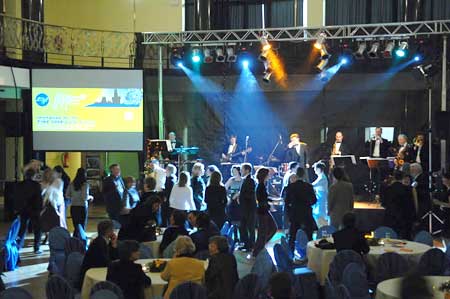
Ivo Banek began by talking about the much publicised problems that it encountered when a fire broke out at the Brunsbüttel and Krümmel NPPs, in Germany. He spoke very candidly about the crisis management errors that were committed at Vatenfall in Germany – errors that led to the eventual resignation of several senior managers. He underlined how the company had underestimated the power of TV pictures and how they can convey dramatic and out-of-context images to the public. They were far too reactive and hesitant in their response, rather than proactively communicating in a timely and clear way. Ivo Banek focused on how Vatenfall had to re-establish the credibility of the organisation following the crises and restore the public’s trust in nuclear energy. It was a salutary tale for all nuclear communicators to take heed of – the right communications guidelines and strategy have to be in place before any crisis occurs, so that public confidence in the organisation and its future communications can be safeguarded.
Mr. Furutsuka outlined how the Tokyo Electric Power Company collaborated with Japan’s government-led Nuclear and Industrial Safety Agency (NISA) and handled its communications strategy in the aftermath of the Chuetsu-oki earthquake that hit Japan and caused a minor fire at their Kashiwazaki Kariwa NPPs. He outlined the main elements in the communications strategy, including information campaigns aimed at local community, handling regional and national media and working closely with the Japanese government. The main lessons to be learned by both the utility and the Japanese government are: that there must be a co-ordinated strategy and team in place and ready to spring into action as soon as possible, that lessons must be learned by all parties and incorporated into crisis management practices, that crisis management training should be provided and that when a crisis occurs clean and unambiguous information must be sent out to key audiences promptly. This helps reassure the public and maintain respect for the organisation.
After the final plenary session the chairpersons from the 6 workshops gave participants their feedback on what had happened during their respective breakouts. The main issues discussed, the opinions expressed and the conclusions drawn were summarised briefly.
The closing session of PIME 2008 consisted of two main items. Firstly, John McNamara of the Nuclear Industry Association in the UK gave a presentation of how the decision to re-launch a new build programme in the UK, following a nationwide stakeholder consultation process, has been communicated by the British nuclear industry. The NIA’s strategy for success is based upon six key elements: developing and maintaining good media relations, engaging the public through targeted information campaigns, using only trusted information sources, having a rebuttal service in place, carrying out an effective public affairs programme and maintaining high visibility. As far as public opinion is concerned, 65% of the British public now support nuclear energy as part of a balanced energy mix. However, 72% of MPs in the UK support the replacement of nuclear and there is still substantial opposition to the dawning of a new nuclear age in the UK. The communications campaign goes on….
Finally, Bernard Jolly, who is a member of SFEN and a Member of the Board of ENS, brought PIME 2008 to an end by announcing the winner of the 2008 PIME Award for Communications Excellence. The winner, who was elected by PIME participants, was COVRA, in the Netherlands, for the innovative way it has used art as a vehicle for connecting with its local and regional community and highlighting the state-of-the-art technology used at its radioactive waste storage facilities.

Before the PIME 2008 participants headed home after two days of lively debate and serious networking it was announced that PIME 2009 would take place in February, in Edinburgh.
Copies of all the presentations given during PIME, including
some of the workshop feedback summaries are available to participants via
the PIME 2008 section of the ENS website at:
www.pime2008.org/presentations.htm.
http://www.euronuclear.org/e-news/e-news-20/pime2008-meeting.htm

The city of Prague (Czech Republic) was the host for the 20th edition of the PIME conference (Public Information Material Exchange). Organized by the European Nuclear Society, in cooperation with FORATOM, IAEA and the Nuclear Energy Agency, the conference dedicated to communications and public relations, brought together over 190 participants from 30 different countries. During its 20 years of existence, PIME has become an important event on the agenda of all communicators in the nuclear field and attracts specialists from similar industries such as wind power, as well as from distinct sectors such as transportation.

This year's conference took place from February 10-13, comprising a two day conference programme and one day dedicated to a technical tour to the research reactor of the Faculty of Nuclear Science and Physical Engineering, in Prague.
PIME benefited from the support of Czech power company - CEZ, which satisfies about 60% of the country's energy demand.
The conference addressed new trends in communications, new electronic media, internal communications, education and training, risk and crisis communications and public consultation and stakeholder involvement. The presentations highlighted the extensive experience in public relations of major energy companies such as CEZ, EDF, the Japan Atomic Power Company, Vattenfall Europe, NIA and Nuclearelectrica, to which was added the contribution of international organisations such as IAEA, OECD, NEA, ENS, WiN, YGN and the Nuclear Energy Institute. Communications experts from academic institutions and advertising specialists from Ogilvy Public Relations Worldwide also attended.
The interactive workshops which succeeded in involving the participants in group activities were the main attraction of the conference. The workshop dedicated to "New communication tools", set up and moderated by the Young Generation Network debated the role of the blog in promoting messages and facilitating communications between co-workers and the organisation's external publics. Up to now, YGN and WiN have built personalized blogs, one of them being WiNfluence, as well as online groups. In the "Risk communications" workshop, working groups had to come up with a communication strategy in answer to a hypothetical risk scenario. The team representing Nuclearelectrica brought its contribution to the "Internal communication" workshop, presenting the results of the internal opinion poll carried out at SNN headquarters regarding communications, organizational culture, access to information and cooperation. The merits as well as our strategy for improving internal communication were acknowledged.
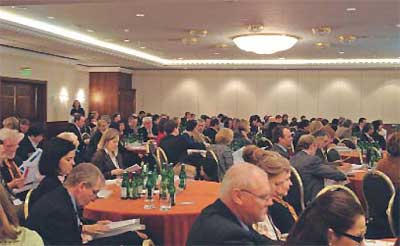
The main innovation at this year's conference was the participant's possibility to decide the winner of the PIME Award for excellency in communications. More than half of the votes were received by the COVRA team from the Netherlands, whose project entitled "Safe is beautiful" was rewarded for the innovative way it had used art as a vehicle for connecting with its local and regional stakeholders. The storage of nuclear waste is as natural and safe as the storage of art masterpieces in a museum, according to the COVRA project.
The next edition of PIME will takeplace in the capital city of Scotland, Edinburgh.
Report from Nuclearelectrica, Romania
http://www.euronuclear.org/e-news/e-news-20/rrfm2008.htm


In the first of what will be a series of Young Generation Reporter features covering ENS conferences, Nicolas Franck of CERCA, AREVA, gives the following personal account of the recent RRFM 2008 conference, in Hamburg.
The Research Reactor Fuel Management (RRFM) 2008 conference took place from the 2-5 March in the beautiful city of Hamburg, in northern Germany. PhDs, engineers, scientists, researchers and a multitude of other people working in the field of research reactors and related fuel management met to present their work and to share their research data and ideas on all things connected with the fuel management of research reactors.
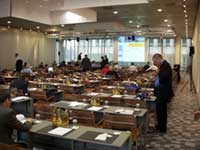 |
After the traditional welcome address by Santiago San Antonio, the ENS Secretary General, the conference kicked off with a presentation celebrating the 50th anniversary of research at GKSS, the company that hosted RRFM 2008. Over the next three days, no fewer than 54 presentations were made around 5 central themes: international topics and an overview of new projects and fuel developments, fuel development and manufacture, reactor operation, safety and core conversion, fuel back-end management and innovative methods in research reactor analysis. Throughout the entire conference a poster gallery featured a display of projects covering these 5 themes. |
Two subjects were particularly discussed: the development of the high-density U Mo fuel and reactor conversion from HEU to the LEU. From a personal point of view, I was more interested in the presentation on the PALLAS reactor project given by Mr. Van Der Schaaf and on the reactor conversion programme presented by Mr. Staples. The coffee breaks and the lunches provided a suitable opportunity to discuss the presentations in more detail, to network and to meet new people. |
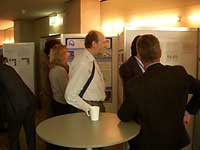 |
Personally, I have had the opportunities to discuss with people from many different countries, including Korea, the United States, Argentina, Belgium, Germany, The Netherlands, Russia and France.
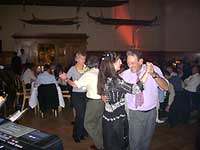 |
RRFM 2008 was completed by two “thematic parties.” The first one was organized by AREVA and took place in the prestigious Museum of Ethnology, and the second began with a boat trip to Hamburg’s famous port followed by a dinner at an historic former warehouse in the port district. These two evenings were very convivial and pleasant, allowing people to meet in another context and to make new friends. My function as young reporter during these evenings made it easier for me to meet new people and forge new friendships, which I was able to do with several people. |
The three-day conference programme ended with a technical visit to either the GKSS research reactor or the HASYLAB Research Centre. The organization of RRFM in Hamburg was perfect: the choice of location for the conference, administration, the agenda and contents of the various sessions, the food and drink, the planning for the social programme (including bus transportation to and from the various locations) and the organization of the technical visits made the conference one to remember. RRFM 2008 was an undoubted a success, especially in view of the number of participants and the quality of their presentations. I would like to give a big thank you to the ENS staff for their hard work, for the quality of the organisation and for their availability and friendliness.
The whole experience was very interesting for me. It was also very enriching both professionally and personally for several reasons: first of all, it gave me a better understanding of the international organisation of research reactors; it also gave me a better knowledge of the mission and objectives of the RRFM conference; it enabled me to build up a network of contacts and finally, it gave me an opportunity to discover what it takes to successfully organise an international conference like RRFM 2008. As a result of participating I am looking forward to participating in other congresses and conferences like this one.
Nicolas FRANCK
Titulaire d'Affaires
Service Combustibles Atomiques, CERCA,
AREVA
France
If you would like to add your views on RRFM 2008 to those of Nicolas, please forward them to Kirsten Epskamp, ENS Manager or Mark O’Donovan, Editor-in-Chief of ENS NEWS.
http://www.euronuclear.org/e-news/e-news-20/ena2008.htm

On 15 and 16 April around 180 people congregated at the Marriott Hotel in Brussels to take part in ENA 2008 (the European Nuclear Assembly). This biannual international conference organised by FORATOM is the largest event of its kind on the European |
 |
events calendar. The title of this year’s ENA was Nuclear Energy: Developing Europe’s Low-carbon economy, which reflected one of the EU’s main policy priorities, namely to encourage sustainable economic growth while at the same time reducing the Community’s carbon footprint. Among the participants were senior EU officials, MEPs, leaders of industry, representatives of think tanks and consumer groups and several ENS members. The accent was on broad stakeholder involvement in the debates.
ENA 2008 kicked off under the chairmanship of Bruno Lescoeur, Senior Executive Vice President of EDF, with an opening session entitled Low-carbon energy policy in Europe. The first guest speaker was EU Energy Commissioner, Andris Pieblags, who gave an overview of EU energy policy in general and the importance of the nuclear component in that policy. He spoke about the latest policy developments in the nuclear field, including the European Nuclear Energy Forum (ENEF) and the Sustainable Nuclear Energy Technology Platform (SNETP), stressing the important role that nuclear energy has to play in the EU’s future energy mix and the need to guarantee safety and security safeguards when it comes to operating plants and handling radioactive waste. One of the strongest messages to emerge from his presentation was the need to extend the lifetime of existing nuclear power plants and build the next generation of reactors that will continue to underscore nuclear energy’s important contribution to the goal of achieving a low-carbon economy. For the Commissioner to have given such an endorsement of the role of nuclear energy in the EU’s energy future would have seemed inconceivable only a couple of years ago, when discussions about the role of nuclear energy were largely marginalised to the fringes of the political debate.

Pierre Sellal, France’s Ambassador to the EU then addressed the Assembly on the priorities and challenges facing the forthcoming French Presidency and its future promotion of nuclear energy as a vital component of the Community’s low-carbon economy.
Czech MEP Miroslav Ouzky (EPP-ED), who is also the Chairman of the European parliament’s Environment Committee, spoke to the conference via a recorded video link. He emphasised how the debate in favour of nuclear energy as a main pillar of the fight against climate change has gained considerably in impetus in the European Parliament of late (e.g. with the recent adoption by an overwhelming majority of MEPs of the Reul Report on Conventional Energy Sources and Energy Technology, which contained a ringing endorsement of nuclear energy as “the largest low-carbon energy source in Europe”). Mr Ouzky added that without nuclear energy the EU would never reduce its carbon footprint as renewable energies alone could never achieve this goal.
|
With the nuclear revival well under way in several European countries and ambitious new build programmes in the pipeline, another main subject of debate at ENA 2008 was the question of supporting the current drive for new build that is gathering momentum across Europe and beyond. Two keynote speakers spoke on the subject: first up was Gérard Mestrallet, CEO of Suez, who emphasised how the building of a new power plant should be viewed as part of a long-term commitment: “A nuclear project covers a period of almost a century – it takes10 years to build a plant, the plants operates for 60 years and the decommissioning phase takes 20 years.” |
Christian Waerterloos, Director of Nuclear Energy at the European Commission’s DG TREN, thengave a wide-ranging presentation about the current state of nuclear policy in Europe, and in particular on the EU’s drive for new build and its promotion of the lifetime extension of existing NPPs as an “intermediary measure.” The session was followed by a panel debate that featured short statements from Gerd Jäger, Executive Vice President of RWE Power, Germany; Sandor Liive, CEO of Eesti Energia (Estonia); Philippe Rosier, President of Rhodia Energy Services and Chairman of BUSINESSEUROPE Energy Group and Bruno Lescoeur.
Next on the ENA 2008 agenda was a session devoted to an EU policy debate on safety and waste management. After a keynote address by Christian Waeterloos, the panel debate was launched by presentations from a regulator’s, operator’s and international organisation’s perspective. Bernard Fourest, who is a member of the Steering Committee of ENISS (European Nuclear Installations Safety Standards), outlined the work being done by European regulators to standardise safety standards at Europe’s nuclear plants and ENISS’ input to the work of WENRA (Western European Nuclear Regulators’ Association). Hans Forsström, Director of the IAEA’s Division of Nuclear Fuel Cycle and Waste Technology, then gave a view of global developments in the field of waste management. Finally, Hans Codée of the Dutch national centre for radioactive waste management, COVRA, emphasised how the technology needed to safely store radioactive waste of all levels exists in Europe and that the problems and dangers generally associated with waste can be easily overcome. He also said that the public can be convinced of the safety and efficiency of waste storage if the success of operations like those at COVRA is communicated effectively.
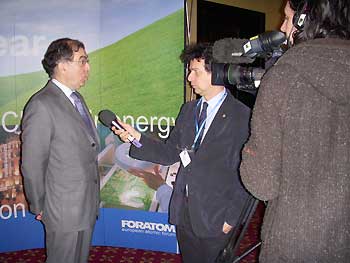
The final session on Day 1 of the conference had a sharp technical focus with a series of presentations and a subsequent debate on the very latest in nuclear reactor designs entitled: The appliance of science: designing the reactors of tomorrow. The panel members that started the debate rolling were Didier Haas, of the European Commission’s Joint Research Centre (JRC); Franck Carré of the CEA, who is Co-ordinator of the SNETP’s Working Group on GEN IV Reactors and François Hédin, Chairman of European Utility Requirements (EUR).
Later that evening a Gala Dinner at the Brussels Bourse featured a speech from Hungarian MEP Edit Herczog (PSE) in which she noted the great recent strides that have taken place within the Parliament with regards to the nuclear debate. She congratulated the efforts of MEPs and industry alike to promote the nuclear cause.
Next morning delegates returned bright and early to take part in Day 2 of the conference. Proceedings began with a session about the financing of nuclear new build called: Creating the optimal conditions for financing nuclear investments. Various financing models were discussed and delegates were able to judge which model was best suited to the business model and financing culture prevalent in their respective countries. The keynote speaker for this session was Lauri Piekkari, Vice President and Treasurer of TVO, who presented the successful financing model behind the Olkiluoto 3 construction project and later joined the panel for the debate.
Presentations were made by two 2 panellists: Gabriel Burlacu, President of the Board of Nuclearelectrica (Romania) spoke about how Cernavoda 2 was financed and units 2 and 3 (currently under construction) are being financed. Patrice Lambert de Diesbach, Head of Research at CM-CIC Securities spoke about EDF’s financing model and emphasised how nuclear energy, compared to other major energy sources, is competitive when it comes to financing costs, CO2 avoidance costs and consumer electricity prices (France has the lowest household electricity costs in Europe after Austria).
The next session, entitled Reconciling economic growth and the low-carbon economy, highlighted the main conference theme. Arne Mogren, Head of Climate Policy at Vattenfall, Sweden, underlined what all industrial sectors must do in order to reduce global temperatures by 2°C by 2030. He also spoke about the cost and opportunities of various CO2 abatement measures, including carbon capture and sequestration (CCS). Hans Grünfeld, President of the International Federation of Industrial Energy Consumers (IFIEC) gave a consumer’s perspective of how reconciling economic growth and the low-carbon economy impacts upon prices.
Malcolm Grimston, Associate Fellow in Energy, Environment and Development at the British think-tank Chatham House, gave a bleak overview of spiralling global energy demands and stressed the urgent need for new technology, nuclear power and changes in lifestyle to lead the drive to reduce CO2 emissions. He underlined how nuclear energy is an attractive option when it comes to reducing CO2 emissions and how the cost of carbon abatement is low in comparison with carbon capture and storage and most renewables.
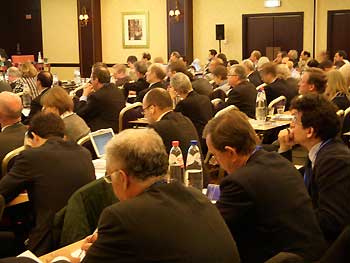
The final session at ENA 2008 was entitled: The future of nuclear energy: investing in skills and talents. Slovenian MEP Romana Jordan-Cizelj (EPP-ED) kicked it off with a keynote address on the urgent need for governments and academia to do more to identify, recruit and retain the most talented young scientists and researchers -because it is they who will sustain the nuclear revival. The subsequent debate focused on a number of initiatives launched by the nuclear industry to redress the “nuclear talent deficit” and of the gradual improvement of the situation in a number of countries. Christophe Alois Heil, Director of Nuclear Affairs at EnBW (Germany), spoke about the programme of training and educational courses that the German operator offers to young people seeking a career in the industry. Jean Llewellyn, Chief Executive of the National Skills Academy for the Nuclear (NSAN) Industry then presented the work that her recently-formed organisation is doing in the UK to encourage the learning of new skills, the retraining of the existing workforce, the need for flexibility and mobility in the workforce and the partnership between universities and NSAN to achieve an offer more attractive courses for students of science, technology, engineering and maths – including at school level. The last panel speaker was Edouard Hourcade, Vice Chairman of ENS’ Young Generation Network. He spoke about what the industry should do to attract more young people to pursue a career in nuclear engineering and research. He stressed the importance of skills building and innovation as ways of attracting young people and of the need for knowledge transfer from the “older” generation to the younger generation. He summed up the needs of the research sector by saying that “R & D is like building a cathedral, it requires faith.” With the future of nuclear energy an ever-present focus during the conference, it was quite appropriate that the last word went to the Young Generation Network.
Judging from the positive comments received by delegates, ENA 2008 was a great success. It also attracted a record number of journalists and subsequent media coverage was greater than for any previous Assembly. Many sessions were of direct interest to the nuclear science community and the policy debates showed how the continued fight to achieve economic growth while promoting a low-carbon economy requires a vital input from the science and research community.
For more information about ENA 2008 visit the FORATOM website at the following
address: www.ENA2008.org

Nneutron kinetics equations are one of the cornerstones of the theory of nuclear reactors. The awareness of nuclear engineering students of its importance is a precondition that the new generation will handle the currently operating and future nuclear power plants safely. They have to learn how to design control systems for reactors sensitive to an avalanche situation like power increase.
The classical neutron kinetic equations with six delayed groups are not solved analytically. Here they are solved both numerically and with a corresponding block diagram and applied to a Chernobyl type reactor. The results are displayed graphically.
The Chernobyl type reactors have positive void coefficients. When water is replaced with steam the power is increasing. A sudden increase of the steam content causes a rapid power surge.
The importance of choosing the magnitude of the void coefficient and the parameters for the automatic control system is demonstrated.
Now, 22 years after the Chernobyl accident it is important for today’s and tomorrow’s generations of nuclear engineers to learn to design control systems for reactors with "runaway" characteristics.
The Chernobyl type of reactor (RBKM) core is a huge graphite cylinder (7 m high, 12 m diameter) and within some 1600 channels with water and steam cooled fuel rods inside. The fission neutrons are slowed down (thermalised) mainly in the graphite and a portion of them is absorbed in the water. When a part of the water is replaced by steam (void) the absorption is reduced, causing a positive reactivity contribution. This is the positive void coefficient. After the accident the enrichment of the fuel was increased and the neutron spectrum became harder resulting in a lower positive void coefficient

Figure 1, the Chernobyl Reactor
With the Chernobyl experiment due to the abrupt decrease of the speed of the main circulation pumps and the sudden drop of the reactor pressure at low reactor power and heavy Xenon poisoning, the steam (void) content in the coolant channels increased suddenly from a few percent to about 50%. Thus the positive void coefficient - about 30 pcm/% - caused a large reactivity insertion.
The neutron flux and thereby the reactor power increased very fast. Due to the thermal inertia of the fuel and the small value of the fuel temperature coefficient the Doppler effect could not break the power excursion. Therefore, to characterize the process at the initial phase, to use only the reactor kinetics equations is sufficient.
Here
t |
time (sec) |
N |
neutron flux (proportional to the reactor power) |
|
change of the effective neutron multiplication factor (keff) |
ß |
sum of the delayed neutron fractions (here 0.006502) |
ß i |
the i:th delayed neutron fraction |
l |
neutron mean lifetime (here 0.001 sec) |
|
i:th decay constant (sec-1) |
ci |
concentration of the i:th fraction of the delayed neutrons’ precursors, |
At |
steady state, when time is zero t=0 all time derivatives are equal to zero, |
all |
d/dt=0 and the initial value of the relative power equals unity
N(0)=1, and also no reactivity perturbation is present |

Delayed neutron data for thermal fission in U235 is used
Group
|
1 |
2 |
3 |
4 |
5 |
6 |
Fraction ßi
|
0.000215 | 0.001424 | 0.001274 | 0.002568 | 0.000748 | 0.000273 |
Decay
constant
|
0.0124
|
0.0305
|
0.111
|
0.301
|
1.14
|
3.01
|
The initial values of the delayed neutrons’ precursors
are;
i |
1 |
2 |
3 |
4 |
5 |
6 |
ci(0)
|
17.3387
|
46.6885
|
11.4775
|
8.5316
|
0.6561
|
0.0907
|
x(1)=N x(2)=c1………… x(7)=c6 the
code is
%Save as xprim7A.m
function xprim =xprim7A(t,x,i)
DeltaK=i*0.010*0.50; %voidcoef=i*0.010pcm/percent void
change, void increase 50percent
xprim=[(DeltaK/0.001-6.502)*x(1)+0.0124*x(2)+0.0305*x(3)+0.111*x(4)+0.301*x(5)+1.14*x(6)+3.01*x(7);
0.2150*x(1)-0.0124*x(2);
1.4240*x(1)-0.0305*x(3);
1.2740*x(1)-0.1110*x(4);
2.5680*x(1)-0.3010*x(5);
0.7480*x(1)-1.1400*x(6);
0.2730*x(1)-3.0100*x(7)];
To study the importance of the magnitude of the void coefficient, it is
enough to plot the first colon of the x matrix. The rows of the x matrix
are the time steps.
%Save as ReaktorKinA.m
figure
hold on
for i=0:1:3
[t,x]=ode45(@xprim7A,[0 0.2],[1; 17.3387; 46.6885; 11.4775; 8.5316; 0.6561;
0.0907],[] ,i);
plot(t,x(:,1))
end
hold off
Is given in the following plot;

Figure2. Power Increase at the Insertion of 50% Void at Different Void Coefficients
Using the same parameters a block diagram is created here with SIMULINK
Delayed group 1
Gain1A = 0.2150 Gain1B = 0.0124 Gain1C = 0 0.0124 Integrator1 = 17.3387 (is
the initial value of the first delayed group)
Delayed group 2
Gain 2A = …………………….
GainN = -1.502 [= 6.502 – 5 (= the void reactivity perturbation)]
IntegratorN = 1 (is the initial value of N)
The controller is represented with a zero pole block; (s – 1)/s(s – 1)
Here are the; zeros: [1], poles: [0 1], gain: [1]
Here the absorber rods are represented with an amplifier, the gain is 50
Figure 3. Block diagram of the neutron kinetics (with six delayed groups) and the automatic control system with a PID (Proportional and Integrating “1/s” and Differentiating “s”) controller
In this case study, a 10 % pcm/% void coefficient is used and the perturbation is as earlier, a50% void increase. The system response without an automatic control system is like an avalanche

Figure 4. System response without an effective automatic control
system.
Relative neutron flux (Power) vs. time (sec)
There is of course no construction which can take a 500 times power increase in 10 seconds. During the Chernobyl accident the result was a disaster with an elapsed time much less than 10 sec.
In theory one can specify a control system and a connected absorber rod actuator to team this transient. To achieve this, the control action must be extremely fast and must start effectively within a fraction of a second. However, to realize a mechanical absorber rod operating device with the required speed is very difficult. For this example a PID controller is chosen and the absorber rods are represented with an amplifier which follows the output of the controller. The result is quit reasonable.
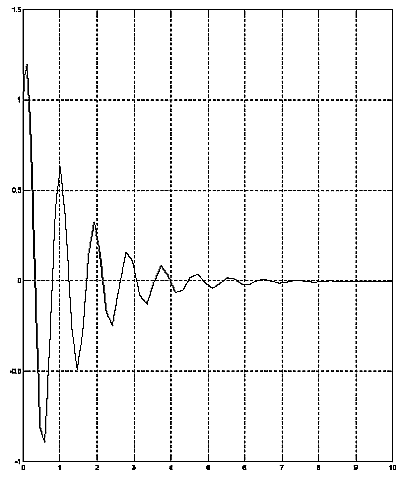
Figure 5. System response with an automatic control system
(PID).
Relative neutron flux (Power) vs. time (sec)
The Chernobyl disaster demands many analyses to really understand what happened there and how to avoid anything similar in the future. This article is one such analysis.
University textbooks on nuclear engineering contain the applied equations. Textbooks on information technology and numerical analyses contain the applied methods.
To be published, ENS 2008
Computing the Chernobyl Avalanche
Calculation of the neutron flux, fuel and moderator temperature transients
for Research Reactors
Proceeding of the NESTet, Nuclear Engineering Science and Technology, energy
technology Budapest, Hungary 4 -8 May 2008
ENS NEWS, Issue: 2006/13, Neutron Kinetics of the Chernobyl Accident
www.euronuclear.org/e-news/e-news-13/neutron-kinetics.htm
http://www.euronuclear.org/e-news/e-news-20/orsart-gkn.htm


Neckarwestheim. The International Energy Agency (IAEA) today presented the results of its OSART Mission at Neckarwestheim Nuclear Power Plant (GKN). The independent experts came to the conclusion that GKN is a very good plant compared to international standards and shows many features of a strong safety culture. In addition, GKN has some examples of good practice worthy of being copied by other nuclear power plants around the world. The report also acknowledges that findings from the OSART Mission to Philippsburg have been implemented at the Neckarwestheim plant.
Miroslav Lipar, Head of the Operational Safety Section at IAEA and in charge of the UN agency's OSART programme, detailed the results of the mission: "Neckarwestheim is a very good plant by comparison with IAEA international standards. Our experts witnessed the good material condition of the plant. All safety-related equipment, systems and components are well maintained and regularly tested. Housekeeping standards are very high, and the plant is clean and tidy. The staff at Neckarwestheim impressed our experts with their technical competency and qualifications. They were open and frank with the experts at all times. We also noted that there is a high level of teamwork at Neckarwestheim.”
Commenting on individual results, Miroslav Lipar said, "We came across several good practices in plant management. One example is the cross-divisional safety management system, which measures, monitors and continuously improves performance in the major operational processes according to a standardised assessment method. We found more examples of good practices, for instance in radiation protection, fuel handling, utilisation of operational experience, IT security and in training and qualifications." Relatively few areas were found with potential for improvement. Miroslav Lipar gave some examples. "We recommend that GKN should further develop expectations regarding industrial safety and enforce them in practice. We also suggest that the plant should introduce a comprehensive system for the documentation and tracking of low-level events below the reporting threshhold. Even if the probability of an emergency at GKN due to technical reasons is extremely low, preventive measures could still be further improved beyond the standards required by German regulators. The management at Neckarwestheim has stated clearly that it intends to work closely on the recommendations and suggestions and take action for improvement."
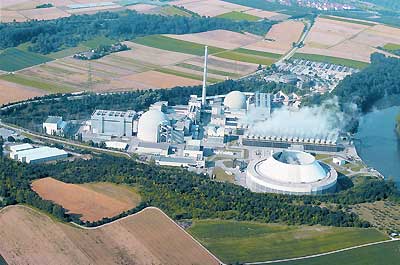
Michael Wenk, Chairman of the Management Board at EnBW Kernkraft GmbH and board member at EnBW Kraftwerke AG, was pleased to hear the IAEA's assessment. "The results of the OSART Mission underscore the high quality of management and safety culture at Neckarwestheim. We wanted to see how we measure up to the IAEA's very high international standards and have met off the challenge. EnBW is the only nuclear operator in Germany whose production sites have all been fully assessed by IAEA within a few years."
"These results are proof that the cross-divisional co-operation between our nuclear power plants is working," continued Wenk. "Neckarwestheim has learned from the experience of the OSART Mission to Philippsburg. Similarly, the IAEA's present suggestions will be discussed intensively not only at Neckarwestheim but at the Philippsburg plant, too. As a result of the OSART missions, we feel that our principle of continuous improvement has been proved right, and our determination to push ahead consistently is great. We will be able to demonstrate this in 2009 when the IAEA returns to Neckarwestheim for the scheduled follow-up visit“.
From October 8th to 24th 2007, an Operational Safety Review Team (OSART) evaluated plant management at Neckarwestheim Nuclear Power Plant on the basis of international standards. The team was made up of 13 experts from outside Germany, all of whom have many years of practical experience in the nuclear power industry. The main assessment areas were Management, Organisation and Administration; Training and Qualification; Op-erations; Maintenance; Technical Support; Operational Experience; Radiation Protection; Chemistry; Emergency Preparedness and Planning as well as Safety Culture.
OSART missions are a service offered by the International Atomic Energy Agency (IAEA) and are considered to be the most intensive and transparent form of assessment for nuclear power plants. At the same time, they promote the principle of continuous improvement, which has always been practised by the nuclear power plants within EnBW. The IAEA is an autonomous scientific and technical organisation affiliated to the United Nations (UN). Member countries like Germany can apply to IAEA for an OSART mission. At the request of EnBW the German Federal Government made an application for a mission to Neckarwestheim.
http://www.euronuclear.org/e-news/e-news-20/gra.htm

The National Technologic Platform for Nuclear Fission Energy R&D CEIDEN is the organisation coordinating the Spanish R&D needs and efforts in the field of fission nuclear technology. Its objective is to develop joint projects that affect different entities with similar problems, and to present a single position responsible for leading to the international proposals or compromises. In the CEIDEN Platform all the sectors related to the Spanish nuclear R&D are present and its scope includes both nuclear power plants currently in operation and future reactors. Any Spanish entity related to nuclear R&D may become a CEIDEN member.
The CEIDEN strategic agenda addresses all those technology-related areas of nuclear fission energy which technical, industrial or scientific aspects. With this purpose in mind, nine technological areas were identified: Materials Behaviour, Fuel Reliability, HLW and Spent Fuel Management, Non Destructive Testing, Equipment Reliability, I&C, Safety and Risk technologies, LWR and Radioprotection and New Plant Designs.
In order to develop the New Plant Designs Area, CEIDEN launched a single task force called the Advanced Reactor Group (GRA). The purpose of this group is to explore short, medium and long-term nuclear fission energy technologies and initiatives. Twenty-one Spanish entities take part in the GRA, with the participation of industry, research centers, universities and regulatory bodies.
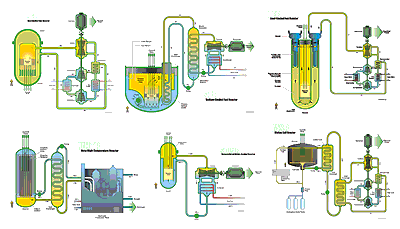
One of the main features of the GRA is its ability to join capabilities, views and efforts from the Spanish industry, research centres, regulatory body and universities in contact with the nuclear field. This characteristic has been recently recognized by the European Commission as the optimal kind of national framework for the development of nuclear R&D projects.
In addition, this multidisciplinary quality allows both constituting working groups with high quality experience in different areas and assuring the transfer of knowledge from the older generation to the young one.
Moreover, The GRA aims to channel all the information related to International R&D programs in the nuclear field, as the European Framework Programs, in order to streamline the participation of all its members.
The GRA activities have classified according to five relevant areas:
The Generation III and Generation III+ reactors Area
The Generation IV reactors Area
The IAEA INPRO initiative Area
The Transmutation Area
The Simulation area
The GRA Generation III and III+ area aims to follow up the activities related to Gen III reactors. Two complementary lines have been recognized as of interest within this project. Firstly, to identify the most suitable licensing process for a potential nuclear power plants build in Spain, taking USA, Finland, France and UK as available examples of licensing framworks. Secondly, to assess the technology capabilities of the Spanish industry for determining its optimal participation level in such projects.
The main purpose of the GRA Generation IV Area is to gain knowledge and know-how through participating in all the international ongoing activities concerning Generation IV innovative systems. The Generation IV Forum, GIF, has selected six technologies for their development. It seems that two of them have been identified as the most promising ones for a commercial expansion: the Sodium Fast Reactor (SFR) and the Very High Temperature Reactor (VHTR). Although Spain is not a direct member of GIF, any member of the Spanish nuclear sector may participate in any of the GIF projects throughout the EURATOM membership.
In addition, the European Commission Framework Programs (FPs) usually define, among other R&D needs, a set of European R&D projects in connection with the GIF identified technologies. One of the GRA Generation IV area purposes in this sense is to identify the FPs projects of importance for the CEIDEN members and to coordinate an integrated participation. As the Sodium and VHT reactors have been chosen within both the GIF and the next FP (seventh), the short term focus objective of this area is to manage a Spanish integrated contribution to these two projects.
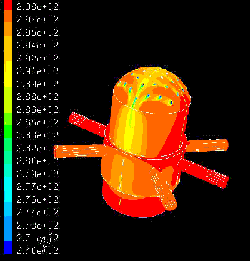
Given that Spain is an OIEA INPRO full member, the main objective of the GRA INPRO Area is to perform a tracking of the INPRO activities and initiatives. Nowadays, INPRO aims at developing a selected group of innovative nuclear systems. The GRA INPRO Area members have studied and selected three projects within the INPRO tasks and intend to monitor their activities.
The objective of the GRA Transmutation Area is to perform a tracking of any activity related to the design of radioactive waste transmutation reactors. In this direction, and in a similar way to other GRA areas, all the technologies in consideration will be assessed and a selection will be made based on the suitability of a short and medium term deployment in the Spanish framework. At the same time as for Generation IV, the European Commission has defined a set of transmutation projects to be developed through the Framework Programmes. Consequently, the most interesting Frame Program projects will be identified and a consensus for an integrated Spanish participation will be reached within the GRA Transmutation Area.
The objective of the GRA Simulation Area is to serve as support for the rest of the GRA Areas by identifying the simulation needs inside the Spanish nuclear sector and by improving the Spanish simulation capabilities. Therefore, the current needs will be identified and the codes that could cover these needs in a better way will be selected and studied. As expected, this group is tightly linked to the others.
In summary, the GRA CIEDEN intends to boost the Spanish nuclear sector involvement, including both industry and public entities as universities and research centres, in the current R&D related to advanced technologies for future nuclear fission systems. As a spin-off of their activities the Spanish nuclear sector will reinforce their capability to face a potential deployment of nuclear energy power plants in Spain and elsewhere in a coordinated way.
http://www.euronuclear.org/e-news/e-news-20/neutron-flux.htm
Calculation of the neutron flux, fuel and moderator temperature transients for Research Reactors
F. REISCH
Nuclear Power Safety, KTH, Royal Institute of Technology
Alba Nova, Roslagstullsbacken 21, S-106 91Stockholm – SwedenABSTRACT
When withdrawing or inserting control rods in the core of a research reactor generally only the end values of the resulting neutron flux are calculated. This code offers a possibility to - in advance - describe the whole course of the changes of the neutron flux, the fuel temperature and the moderator temperature. The reactor kinetics equations are used with six delayed neutron groups, the fuel and moderator thermal dynamics equations, first in the form of Laplace transform with simple time delays and than as first degree differential equations. This set of nine differential equations coupled together is solved numerically.
1. Introduction
The classical reactor kinetic equations with six groups of delayed neutrons (point kinetics) are not solved analytically. In the current program the fuel and the moderator thermal dynamic equations are coupled to the reactor kinetic equations. The equation system is solved numerically. This short program is suitable for use by nuclear engineering students when practicing at research reactors. The parameters to be used depend of course on the reactor design.
2. Simplified neutron kinetics equations
are
Here
t
time (sec)
N
neutron flux (proportional to the reactor power)
change of the effective neutron multiplication factor (keff)
ßsum of the delayed neutron fractions (here 0.006502)
ßi
the i:th delayed neutron fraction
l
neutron mean lifetime (here 0.001 sec)
i:th decay constant (sec-1)
ci
concentration of the i:th fraction of the delayed neutrons’ precursors,
At steady state, when time is zero t=0 all time derivatives are equal to zero, all d/dt=0 and the initial value of the relative power equals unity N(0)=1, and also no reactivity perturbation is present=0
N(0)=1Table 1: Delayed neutron data for thermal fission in U235 is used
Group Fraction ßi 0.000215 0.001424 0.001274 0.002568 0.000748 0.000273 Decay constant Table 2: The initial values of the delayed neutrons’ precursors are;
i
ci(0)
Using the MATLAB notations; x(1)=N x(2)=c1 ………… x(7)=c6
3. Fuel
The fuel temperature change (TFUEL) follows after the power with a time delay (
)
TFUEL
Fuel temperature change
N
Relative neutron flux proportional to the relative power
CFN
Relative neutron flux proportional to the relative power
p
Laplace operator d/dt, 1/sec
thermal time constant of the fuel, here 5 sec
t
time, sec
The differential equation form is
;
At steady state (equilibrium) d/dt=0 N(0)=1
Suppose that at zero power the fuel temperature changes by 0.001 0C when N=1 and thereby cNF=0.001Suppose
=5 sec
=0.2
=0.0002 0C/sec
With the MATLAB notation x(8) = TFUEL
and the neutron kinetics equations can be expanded to include the fuel dynamics
0.0002*x(1)-0.2*x(8)3.1 The Doppler reactivity of the fuel is
Here
the reactivity contribution of the fuel temperature change, at the initial phase (t=0), at steady state (equilibrium) is zero
Fuel temperature coefficient (Doppler coefficient) here is -3.1pcm/00C
The reactivity of the Fuel’s Doppler effect is
= .( ) = -3.1.10-5 .(TFUEL - 0.001)
with MATLAB notation; DeltaKfuel = – 3.1.10-5 *x(8) + 0.0031.10-5
4. Moderator
The differential equation for the moderator is similar to that of the fuel, when the moderator thermal time constant is much bigger then the fuel thermal time constant
>>
TModerator
Moderator temperature change
Moderator thermal time constant, here 100 sec
CNM
Moderator temperature proportionality constant to the relative power, supposethat at zero power operation the moderator temperature change is only 0.0005 cC when the relative power N=1. Then CNM=0.0005
Suppose
= 100sec
=0.01/sec = 0.0005.0.01 = 0.0005.0.01 0C/sec = 0.000005 0C/sec
= 0.000005
With the MATLAB notation x(9) = TModerator; and the neutron kinetics equations can be expanded to include the moderator dynamics too; 0.000005*x(1)-0.01*x(9)
4.1 Moderator reactivity contribution from temperature change
Here
the reactivity contribution of the moderator temperature change at the initial phase (t=0), at steady state (equilibrium) is zero
Moderator temperature coefficient here is - 0.6pcm/0C
The reactivity contribution from the changing moderator temperature is
= -0.6.10-5.(TModerator– 0.0005)
5. Control Rods
the reactivity contribution of the control rods’ movement are here with two different maximum values; 50 pcm respectively 60 pcm
The movements of the rods and the corresponding reactivity changes are given in Figure 1
5.1 The reactivity balance with the control rods, the fuel’s Doppler effect andthe moderator’s temperature effect
The reactivity balance with MATLAB notation;
DeltaK = DeltaKcr + DeltaKfuel + DeltaKmoderator6. Results of the Computation
In Figure 1 there is a diagramof the control rod reactivity used in the calculations
In Figure 2 the calculated relative neutron flux is displayed
In Figure 3are displayed the characteristics of the fuel and moderator temperature increase. The values are very small as here the calculations are performed for zero power operation when practically no power is generated in the fuel and transferred into the moderator. However, the curves clearly demonstrate that the fuel’s thermal time constant is much smaller than that of the moderator’s
Figure 1, Schematic of the control rod reactivity
Figure 2, Relative neutron flux
Figure 3, Characteristics of the fuel and moderator temperature increase7. The Code
contains two parts
Part one
%Save as xprim9FM.m
function xprim = xprim9FM(t,x,i)
DeltaKcr=i*10^-5;
DeltaKfuel=-3.1*10^-5*x(8)+0.0031*10^-5;
if t>=0 & t<10
DeltaKcr=((i*10^-5)/10)*t;
end
if t>60 & t<70
DeltaKcr=(10^-5)*(i-8*(t-60));
end
if t>70
DeltaKcr=-30*(10^-5);
end
DeltaKmoderator=-0.6*10^-5*x(9)+0.0003*10^-5;
DeltaK=DeltaKcr+DeltaKfuel+DeltaKmoderator;
xprim=[(DeltaK/0.001-6.502)*x(1)+0.0124*x(2)+0.0305*x(3)+0.111*x(4)+0.301*x(5)+1.14*x(6)+3.01*x(7);
0.21500*x(1)-0.0124*x(2);
1.424000*x(1)-0.0305*x(3);
1.274000*x(1)-0.1110*x(4);
2.568000*x(1)-0.3010*x(5);
0.748000*x(1)-1.1400*x(6);
0.273000*x(1)-3.0100*x(7);
0.000200*x(1)-0.2000*x(8);
0.000005*x(1)-0.0100*x(9)];Part two
%Save as ReaktorKinFM.m
a=50;
b=10;
c=60;
figure
hold on
for i=a:b:c %i is the max Control Rod reactivity i pcm
[t,x]=ode45(@xprim9FM,[0 80],[1; 17.3387; 46.6885; 11.4775; 8.5316; 0.6561; 0.0907;0.001; 0.0005],[] ,i);
plot(t,x(:,8))
end
hold off
figure
hold on
for i=a:b:c %i is the max Control Rod reactivity i pcm
[t,x]=ode45(@xprim9FM,[0 80],[1; 17.3387; 46.6885; 11.4775; 8.5316; 0.6561; 0.0907;0.001; 0.0005],[] ,i);
plot(t,x(:,9))
end
hold off
figure
hold on
for i=a:b:c %i is the max Control Rod reactivity i pcm
[t,x]=ode45(@xprim9FM,[0 80],[1; 17.3387; 46.6885; 11.4775; 8.5316; 0.6561; 0.0907;0.001; 0.0005],[] ,i);
plot(t,x(:,1))
end
hold off
figure
hold on
for i=a:b:c
x=[0,10,60,70,80];
y=[0,i,i,-30,-30];
plot(x,y)
end
hold off8. References
University textbooks on nuclear engineering, thermal dynamics and control engineering contain the applied equations. Textbooks on information technology and numerical analyses contain the applied method used to solve the differential equations..
http://www.euronuclear.org/e-news/e-news-20/swiss-nuclear-society.htm

The year 2008 has a special meaning for the Swiss Nuclear Society (SNS) because it represents the 50th year anniversary of its foundation and the 10th year anniversary of the foundation of the Swiss Young Generation.
To celebrate the anniversary, the SNS has edited a thematic calendar containing photos of various Swiss nuclear installations (both research facilities and industrial plants). The calendar provides, in a harmonious collage, an overview of nuclear energy in Switzerland from its beginnings up to the present day. Furthermore, the calendar also shows a projection towards the future of nuclear energy by including photos of research facilities currently used in Switzerland for the investigation of advanced Generation III reactors.
The calendar as been distributed to SNS members and (upon request) also to non members interested in this unique document. Figure 1 shows a photo taken from the SNS calendar cover.
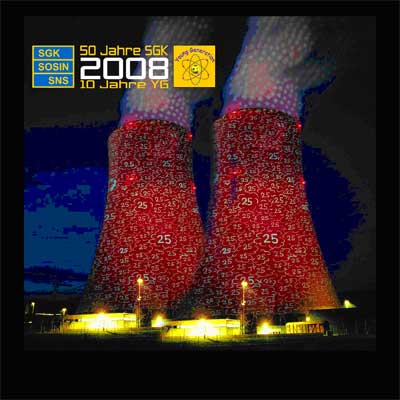
Figure 1: From the SNS Calendar
The SNS elected at its General Assembly, held on April 10 at the Paul Scherrer Institute, Dr. Johannis Nöggerath as its new President, succeeding Dr. Ingeborg Hagenlocher. Also, Dr. Peter Leister left the Board were he had been Deputy President.
Figure 2 shows actual and former members of the SNS Board. From the left: Dr. Ulrich Bielert, Jan Kocourek, Dr. Ingeborg Hagenlocher (former President), Martin Spörri, Dr. Johannis Nöggerath (actual President), Alexandra Homann, Dr. Marco Streit, Dr. Peter Leister (former Deputy President ), PD Dr. Claude Degueldre, Dr. Domenico Paladino. Not featured in the photos, but members of the SNS Board, are Dr. Annalisa Manera and Dr. Philipp Hänggi
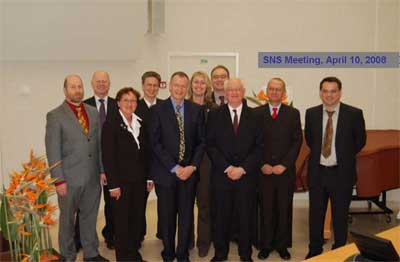
Figure 2: Actual and Former Members of the SNS Board
The General Assembly of the SNS was followed in the afternoon by a thematic seminar aimed at understanding and appreciating the aspects, facts and key people that have contributed to the development of nuclear energy in Switzerland from the beginning. The international nature of the nuclear sector has been emphasized by pointing out analogous activities in other countries in Europe, as well as in other parts of the world.
The invited speakers to the seminar were:
David R. Bonser |
President of the European Nuclear Society |
Bruno Pellaud |
President of the Swiss Nuclear Forum |
Kurt Küffer |
Former head of KKW- Beznau |
Ulrich Schmoker |
Director of the HSK |
Martin Jermann |
PSI Director a.i. |
Michael Kohn |
Former president of KKW-Gösgen |
Marco Streit |
President the Young Generation of the SNS |
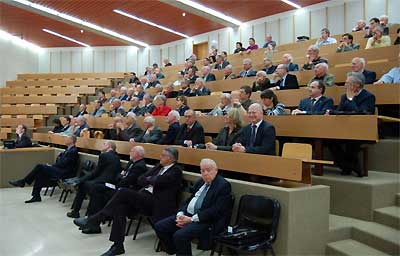
Figure 3: Participants at the SNS seminar
The seminar was followed by a reception offered by the SNS Board to all participants.
http://www.euronuclear.org/e-news/e-news-20/workshop-in-rome.htm

Observance of the principles of nuclear safety and safety culture are a basic requirement for ensuring the of safe and reliable operation of nuclear power plants. Appreciation of the “leadership role in nuclear safety“ is especially important for company managers. Understanding this premise and the terminology associated with nuclear safety in IAEA, WANO, INPO, WENRA and Slovak Nuclear Regulatory documents and in the nuclear licensees’ QA documentation was the topic of the fifth workshop, organized for middle-managers of ENEL, as well as for several employees of Slovenské elektrárne (SE) and for staff without a formal nuclear education.

Lecturers of the Workshop (V. Slugen, A. Toth, L. Krenicky, J. Markus
The fifth workshop was organized in ENEL’s beautiful Villa Lazzaroni in Rome and was attended by 16 ENEL staff and 4 SE staff. Experts were invited to lecture topics about nuclear safety and safety culture (Prof. Vladimir Slugen, Alexander Toth, Lubomir Krenicky and Jozef Markus) under the organization of David Gilchrist, who is the ENEL company nuclear safety advisor and head of Training and Education at SE. The workshop met expectations of lecturers as well as trainees and the definitive form of future workshops will be based on the feedback received from all five courses organised up to now. In its next (possibly final) forms the workshop will be extended to three days and will be incorporated into the induction process for staff without nuclear background who will work for the nuclear licensee or closely with its nuclear operations (this includes lawyers, procurement, investment, public relations,...). This model follows the practice of the USA Institute of Nuclear Operators (INPO) courses, where such nuclear awareness training is accepted as a minimum requirement for all employees of nuclear power companies.
Attendees and lecturers of the Nuclear Safety and Safety Culture Workshop in Rome (David Gilchrist is the first on the right site)
Many of the trainees appreciated the high quality of the workshop, its content, scope and organization. They noted that it was for the first time they had attended such a workshop. Lecturers were contracted with the support and cooperation of the Slovak Nuclear Society. The new form of workshops is planned to begin in a sixth round that will take place at Mochovce NPP, site probably in July 2008.
Text and photo: Jozef Markus – Vice-president of Slovak Nuclear Society
http://www.euronuclear.org/e-news/e-news-20/ygn.htm

The Spanish Young Generation Network, Jóvenes Nucleares, commission of the Spanish Nuclear Society, has presented the documentary film “The Simpsons and the Nuclear Energy”.
This documentary, written and directed by Jose Luis Pérez, member of the Young Generation Network of the European Nuclear Society (YGN) and President of Jóvenes Nucleares (JJNN), presents a broad analysis of how the nuclear energy is shown in the longest-running and most awarded and successful animated series in the history of television: The Simpsons.
For the last twenty years, hundreds of millions of young people (and not so young) have daily watched how Homer Simpson, with a low IQ of 55 due to his hereditary "Simpson Gene”, his alcohol problem, repetitive cranial trauma, and a crayon lodged in the frontal lobe of his brain, performs his tasks in the Springfield Nuclear Power Plant: sleeping and snoring in front of a T-437 Safety Command Console. Homer, who has become the most popular and influential character in the series, is the Safety Inspector at the Springfield Nuclear Power Plant, where, even though we can see luminous rats, the disposal of waste in a children's playground, plutonium used as a paperweight, cracked cooling towers (fixed in one episode using a piece of chewing gum), skeletons in the basement, the creation of a mutant subspecies of three-eyed fish and even a giant spider, no severe accident has ever occurred.

The Simpson’s main characters
The main purpose of this documentary is to provide, in a comprehensive and hilarious way, the necessary tools to examine the way this animated series, a real pop-cultural phenomenon, presents the nuclear energy by means of satirical parody (a cawing crow is heard in every establishing shot of the power plant!).
The documentary shows the features of the main characters of the Springfield Nuclear Power Plant the nuclear safety, radioprotection, security and the human resources modus operandi, and illustrates how Homer has little idea about how to do his job: in one episode he was replaced by a chicken pecking at the buttons, and in another, by a brick tied with a rope to a lever on Homer's control panel. Even if the safety of the plant—and Springfield—has been imperilled more than once on Homer's watch, he still keeps his job: he is the lowest-ranking person in the power plant organisation chart, subordinate to an inanimate carbon rod.

Springfield Nuclear Power Plant
The main thesis of the documentary lies in the use of the Power Plant as an eye-catching framework for exaggerating the features of the stereotype represented by the series characters, who explore the issues faced by modern society. This is really the purpose and strongest point of the programme. This use, which always sacrifices technical correctness in favour of humour, has entailed a sustained presence of Nuclear Energy in television, in millions of homes, generating an unprecedented familiarization with this type of energy source.
The documentary has been very successful in Spain, where medias, including the main national radio station, TV and dozens of newspapers, have largely mentioned to it.
Due to the fact that the main purpose of Jóvenes
Nucleares is to promote nuclear science and technology among young
people, including young politicians, ecologists, journalists, etc,
the documentary can be freely downloaded (in Spanish) from JJNN website
(www.jovenesnucleares.org)
or obtained by email from:
correo@jovenesnucleares.org.
http://www.euronuclear.org/e-news/e-news-20/lobby-for-nuclear-power.htm

During January 8-9, 2008, in Brussels, the European Atomic Forum, FORATOM organized a workshop entitled "Insight into the EU Nuclear Lobbying",which attracted political experts, members of the European Parliament, European Commission and representatives of the European Nuclear industry associations.

The main purpose in organizing the workshop was FORATOM's major interest in promoting nuclear energy at the European level, and highlighting the crucial role that efficient lobbying inside the EU's institutions can play in improving the nuclear's image. The first edition of this workshop underlined, throgh the main topics, the dynamic approach of lobbying techniques and enabled a deeper understanding of the European institutions, their background, structure and working methodology. Special guests highlighted the impact of the EU enlargement and the challenges it brings, as well as the energy sector and the Euratom Treaty that is the basis of the European Union. The second part of the workshop was dedicated to the lobbying and communications techniques that can help get an efficient message across, (structure and methodology of a lobbying campaign, roles and qualities of a lobbyist).
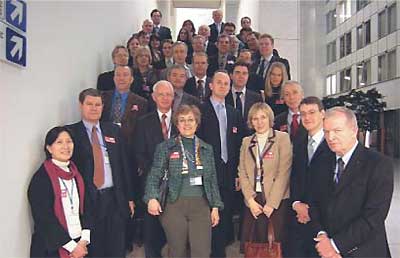
FORATOM's approach the lobbying and its main targets were also addressed. Members of the European Commission and European Parliament participated in this training event and mentioned the very solid network that had been lately established by FORATOM and how they perceive the future collaboration, stressing the necessity for an active and constant process in order to influence the legislative decision making procedure in favor of nuclear energy. The two-day training event, organized by FORATOM, proved to be extremely atractive and complex due to the high level of participants, whose presentations included methods of approaching and promoting the nuclear, underlining the way in which these must be applied, and emphasizing the perfect time to interact with the political process. The participants declared themselves fully satisfied with the manner in which FORATOM got involved in organizing the workshop, and the result was a proposal to hold similar events every year.
http://www.euronuclear.org/e-news/e-news-20/nucnet-news.htm


3 Apr (NucNet): A national bursary award scheme for undergraduates could help build a skills base for the new generation of nuclear power plants that are expected to be built in Britain over the next decade, the chairman of the UK Nuclear Industry Association (NIA) said yesterday.
Lord O’Neill of Clackmannan, who is also a member of the House of Lords Select Committee on Science and Technology, said companies preparing to invest in nuclear new-build in the UK might consider providing financial support to students who plan a career in the industry.
He also stressed the importance of the country’s existing highly-skilled nuclear workforce transferring know-how to the next generation of nuclear professionals.
Lord O’Neill was speaking after attending a meeting of the All Party Parliamentary Group on Nuclear at the House of Commons. The group was updated on proposals for nuclear-related activities by energy minister Malcolm Wicks.
“We’ve got a lot to do, but it’s clear that government and industry together recognise the urgency with which we need to commit ourselves in terms of expanding the nuclear skills base the country will need,” Lord O’Neill said. “But in many respects we are already in a position that a number of other countries would like to be in.”
He also pointed to the launch of a bursary scheme for students on foundation degrees, honours degrees and masters degrees recently announced by the UK’s National Skills Academy for Nuclear in partnership with the Nuclear Decommissioning Authority, Serco and SBB Nuclear.
The chairman of the all-party group, Labour MP John Robertson, said progress on developing a White Paper (policy document) on a national high-level waste repository was also discussed.
“The waste issue is important to people and we need to be able to explain clearly how we can safely manage legacy waste and waste that will eventually arise from a new generation of nuclear plants,” he said.
The government said in January 2008 that consultation about how to deal with the country’s radioactive waste had indicated “broad support” for geological disposal of high-level waste and a voluntary scheme for selecting a host site.
Mr Robertson said he understood that there had already been informal expressions of interest in the scheme by potential site hosts.
Source: NucNet
Editor: editors@worldnuclear.org
The Emirates Nuclear Energy Corporation will serve as the nation’s nuclear energy programme implementation organisation, foreign minister Sheikh Abdullah Bin Zayed Al Nahyan said yesterday.
He said the UAE will also form an international advisory board made up of experts in nuclear nonproliferation, safety, security and infrastructure development.
Launching the UAE’s new policy on the evaluation and potential development of peaceful nuclear energy, Mr Zayed Al Nahyan said “robust growth” of the economy will require continued access to affordable energy, and for this reason, the country has begun to evaluate the potential contribution of nuclear energy to its domestic energy mix.
He said studies carried out by the UAE have shown that nuclear energy represents a commercially competitive and environmentally friendly option for the secure generation of electricity, particularly in light of projected future shortages of natural gas.
The generation of one kilowatt hour of electricity from a nuclear reactor would cost less than one-third of what it would cost to produce the same kilowatt hour using a crude-oil fired power plant, he said.
He said the UAE was determined to conclude a number of pertinent international agreements, including the IAEA Convention on Nuclear Safety and the IAEA Joint Convention on the Safety of Spent Fuel Management.
In an effort to limit the danger of proliferation, the government has also adopted a policy renouncing the development of any domestic enrichment or reprocessing capabilities in favour of long-term arrangements for the external supply of nuclear fuel.
In January 2008, an agreement that could lead to two European pressurised water reactors (EPRs) being built in the UAE was announced in Paris. France’s Areva group, Suez of Belgium and the oil and gas group Total said they had signed a partnership agreement to submit a nuclear power plant project to the UAE that would also involve local partners.
Source: NucNet
Editor: david.dalton@worldnuclear.org
http://www.euronuclear.org/e-news/e-news-20/Member-Societies.htm

|
Austrian
Nuclear Society |
Belgian
Nuclear Society |
|
British
Nuclear Energy Society |
Bulgarian
Nuclear Society |
|
Croatian
Nuclear Society |
Czech
Nuclear Society |
|
Finnish
Nuclear Society |
French
Nuclear Energy Society (SFEN) |
|
German
Nuclear Society (KTG) |
Hungarian
Nuclear Society |
|
The
Israel Nuclear Society |
Italian
Nuclear Association |
|
Lithuanian
Nuclear Energy Association |
Netherlands
Nuclear Society |
|
Nuclear
Society of Russia |
Nuclear
Society of Serbia |
|
Nuclear
Society of Slovenia |
Polish
Nuclear Society |
|
Romanian
Nuclear Energy Association (AREN) |
Slovak
Nuclear Society |
|
Spanish
Nuclear Society |
Swedish
Nuclear Society |
|
Swiss
Nuclear Society |
http://www.euronuclear.org/e-news/e-news-20/Corporate-Members.htm
Links to ENS Corporate Members
|
|
Aare-Tessin
AG (ATEL) |
Advanced
Measurement Technology Inc. |
|
Andritz
AG |
Ansaldo
Nucleare S.p.A |
|
AREVA
NP |
AREVA
NP GmbH |
Atomic
Energy Council (AEC) |
BKW
FMB Energie AG |
|
BNFL |
Belgatom |
|
Centralschweizerische
Kraftwerke (CKW) |
Chubu
Electric Power Co. |
|
Comisión
Chilena de Energía Nuclear |
CCI AG
(formerly Sulzer Thermtec Ltd) |
|
Colenco
Power Engineering AG, Nuclear Technology Department |
Commissariat à l’Energie
Atomique (CEA), Nuclear Energy Division |
|
Design
Bureau "Promengineering" |
Eckert & Ziegler
Isotope Products GmbH |
|
NV Elektriciteits-Produktiemaatschappij
Zuid-Nederland EPZ (Electricity Generating Co. Ltd in the Southern
Netherlands) |
Energie
Ouest-Suisse (EOS) |
E.O.N
Kernkraft GmbH |
Euro
Nuclear Services BV |
Electrabel,
Generation Department |
Electricité de
France (EDF), Communication Division |
|
ENUSA
Industrias Avanzadas SA |
EXCEL Services Corporation link |
|
Framatome
ANP (Advanced Nuclear Power) |
Framatome
ANP, Inc |
|
GE Nuclear
Energy |
|
Holtec
International |
IEA
of Japan Co. Ltd |
|
Institut
National des Radioéléments, |
Japan Electric Power Information Center (JEPIC) link |
|
Jozef
Stefan Institute |
Kernkraftwerk
Gösgen-Däniken AG |
|
Kernkraftwerk
Leibstadt AG (KKL), |
Elektroinstitut
Milan Vidmar |
|
L-3 Communications
MAPPS Inc. |
Microfiltrex
- a Division of Porvair Filtration Group Ltd |
|
Nordostschweizerische
Kraftwerke (NOK) |
NRG Arnhem |
NRG
Petten |
Nuklearna
Elektrarna Krsko |
|
NUKEM
GmbH |
Paks Nuclear
Power Plant Ltd |
|
Paul Scherrer
Institute |
Polimaster
Ltd |
|
RADOS
Technology Oy |
Siempelkamp
Nukleartechnik GmbH |
|
SKB (Swedish
Nuclear Fuel and Waste Management Company) |
SPE Atomtex |
|
Studsvik
AB |
Studiecentrum
voor Kernenergie, Centre d’Etude de l’Energie Nucléaire
SCK/CEN |
|
Synatom |
Taiwan
Atomic Energy Council (AEC) |
|
Taiwan
Power Company (Taipower) |
Technicatome |
|
"Technoatomenergo" Close
Joint-Stock Company |
Teollisuuden
Voima Oy / Industrial Power Company Ltd (TVO) |
Tokyo
Electric Power Co. (London Office) |
UNESA |
|
Urenco
Limited |
USEC Inc. |
|
Vattenfall
AB |
VTT Nuclear |
|
Hans Wälischmiller
GmbH |
World
Nuclear Association (WNA), |
|
Westinghouse
Electric Company |
World
Association of Nuclear Operators (WANO), |
http://www.euronuclear.org/e-news/e-news-20/editorial.htm
Mark O’Donovan, Editor-in-Chief
Contributors to this Issue:
David Bonser (ENS)
David Dalton (NucNet)
Kirsten Epskamp (ENS)
Nicolas Franck (French YGN)
Jozef Markus ( Slovak Nuclear Society)
Domenico Paladino (Swiss Nuclear Society)
José Luis Pérez (ENDESA, Spanish YGN)
Frigyes Reisch, (KTH)
Andrew Teller (Areva)
Realisation:
Marion Brünglinghaus
Rue Belliard 65, BE-1040 Brussels
Phone +32 2 505 30 50 - Fax: +32 2 502 39 02
E-mail: info@euronuclear.org - http://www.euronuclear.org
The ENS News is a quarterly publication, in electronic
form only.
Copyright notice ©2008 European Nuclear Society.
Reproduction is authorised provided that the ENS News is acknowledged as the
source – except where otherwise stated.
![]()
© European Nuclear Society, 2008